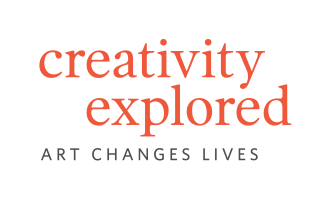Making the art world more accessible
Creativity Explored gives developmentally disabled artists a platform to exhibit their immense talent. Learn how they use digital tools like Dropbox to expand their reach and elevate the artists' work.

Products used
Dropbox, Transfer
Industry
Media and entertainment
Size
2–249
Location
San Francisco, CA
Background
Art is essential to life. That’s the belief behind Creativity Explored, a studio-based collective for developmentally disabled adults. The organisation partners with over 100 artists, providing supplies and personalised training programmes. More importantly, it gives disabled people a platform to express themselves.
“We provide a place for disabled artists to showcase their talents in a unique way,” explains Ann Kappes, director of art partnerships at Creativity Explored. “We help our artists participate in the contemporary art world – and be seen as artists first.”
“We’re a grass-roots, medium-sized non-profit. When we use a tool that the rest of the design world uses, it helps professionalise our organisation and the artists, too.”

Art can be accessible to everyone
The artists at Creativity Explored create work that regularly hangs in museums, galleries and art fairs, and pieces decorate housing developments, office buildings and hotels. Companies like CB2 and Dropbox license the artwork for products or digital experiences. All told, Creativity Explored artists have collectively earned over $2 million.
The epicentre of Creativity Explored is the main studio and gallery in San Francisco. In the studio, the artists work side by side with their teachers and mentors. The gallery hosts about 10,000 visitors annually – except for last year, when the pandemic put in-person classes on hold and shuttered the space.
With its facilities closed, Creativity Explored needed a new way to work together. So it used technology to fill in the gaps. Now it offers 24 virtual classes a week over Zoom. Plus it provides internet access and iPads to those who need them.
The pivot to online instruction has been a success. Some artists are thriving in the new virtual environment, and others didn’t always have reliable transportation to and from the studio. Creativity Explored can now expand its mission by offering a hybrid service model that meets artist’s needs with both in-person and online opportunities.
Unfortunately, the pandemic presented another problem: the gallery sat empty for over a year because it couldn’t host exhibitions and visitors. So how do you sell art during a lockdown? Creativity Explored embraced technology once again.
The collective maintains a digital library of all its artists’ work – a vast catalogue with over 20,000 pieces to date – and everything in the collection is available to license. This way, artists can still earn income even after their physical artwork is sold.
The professional art services team works with architects, interior designers and corporate partners to help them choose the perfect piece for their project. It’s no easy feat, but digital tools like Dropbox help the entire process run smoothly.

Finding just the right masterpiece
Typically, a new client wants art that has a specific motif, such as birds, dogs or Victorian whimsy. The art services team combs the library for a range of pieces that fit the theme – sometimes up to 60 at once. All of the selects are uploaded and stored in Dropbox, so every image is neatly organised and easy to browse. Then the team can share the entire project folder with the client in just a few clicks.
Creativity Explored has clients around the world, and Dropbox helps them collaborate asynchronously. There’s no need to schedule a Zoom call across multiple time zones. Instead, a client can share comments and annotate images directly in Dropbox, and the art services team can check on the client’s progress without bugging them with calls, texts or emails. Dropbox shows who’s viewed a file and who hasn’t.
Once a client chooses an image to license, they’ll need the final file. High-resolution images can be hard to deliver – often they’re too big for email – so Creativity Explored needs a reliable, professional way to send large files. Dropbox helps the art services team make seamless digital deliveries, with file transfers of up to 100 GB in just seconds. Plus the client gets fast, easy access to the content even if they don’t have their own Dropbox account. It’s a tidy way to wrap up the entire process, which helps Creativity Explored leave a good impression and generate strong word-of-mouth.
“We’re a grass-roots, medium-sized non-profit,” says Ann. “When we use a tool that the rest of the design world uses, it helps professionalise our organisation and the artists, too.”
